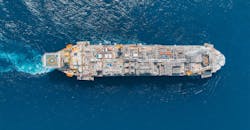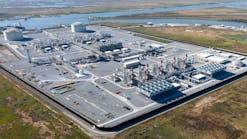This course develops ability in the analytical aspects of seismic field acquisition, particularly to the design of customized seismic strategy, field tests, quality control techniques and cost efficiency. It is built upon the belief that each seismic venture is unique, requiring special attention to the details of the geological questions to be solved. It is structured such that it builds upon the very basics of seismology towards the more complex in a manner that participants will be able to follow. The course is a true treasure trove of ideas with well-established field procedures based upon actual field experience. Classroom exercises will be sandwiched between pertinent chapters to provide discussion and group learning opportunities. Field acquisition consumes about 90% of a seismic budget, data processing about 10% and interpretation, however important is only about 1%. The current scientific effort on these however is mostly the other way around. This course intends to reverse such trend by focusing upon the science of seismic field acquisition techniques.
Geophysicists who work in seismic data acquisition, experienced interpreters and team leaders who want to learn more about seismic data acquisition.
You will Learn:
Participants will learn how to:
- Understand the seismic field acquisition process better
- Design appropriate field acquisition strategy
- Plan and conduct pertinent field tests
- Supervise field operations controlling both data quality and cost-efficiency
Course Content:
- Introduction: the value of information
- Fundamentals: review of basics in exploration seismology and related physics
- Borehole Seismics: sonic logs, synthetics, check-shot surveys, VSP and seismic while drilling
- Marine Seismic Survey Methods: terminology, streamer, explosive and implosive sources, marine vibroseis, marine 3D, multi-source, multi streamer, multi-vessel, wide azimuth methods, circular and coil shooting, ghosting, dual sensor techniques, ocean bottom station nodes, marine seismic parameters and designs, quality control
- Seismic Design Strategy: the geological database, the velocity function, optimum spread design, sample rates, fold, resolution, emergence and beaming, amplitude and spectral decays, non-hyperbolics, migration aperture, array designs, source receiver and recorder selection
- Field Tests and Parameter Optimization: acceptance tests, receiver optimization, the stack-array, impulsive source optimization, vibroseis optimization, sweep designs, redundancy, signal-to-noise, HPVA techniques, noise tests, noise classification, filtering, the dynamic range/resolution, the seismic scatter, scatter analyses, spectral analyses, repeatability studies
- 3D and 4D Concerns: marine and land 3D, binning, acquisition footprints, broad and narrow distribution of fold, azimuths and offset, crossequalization, migration stack fold, wide and narrow azimuth array designs
- Seismic Correction Issues: weathering corrections, datum corrections, uphole surveys, shallow refraction surveys, the half-intercept method, crossover velocity solution
- Cost-efficiency Issues: RFT preparation, bid evaluation, flexible-effort acquisition technique, on-site client representation
- Health Safety and the Environment: safety with explosives, vibroseis, drilling, heli-portable and fluvial operations, safety issues in rainforest, desert and arctic


